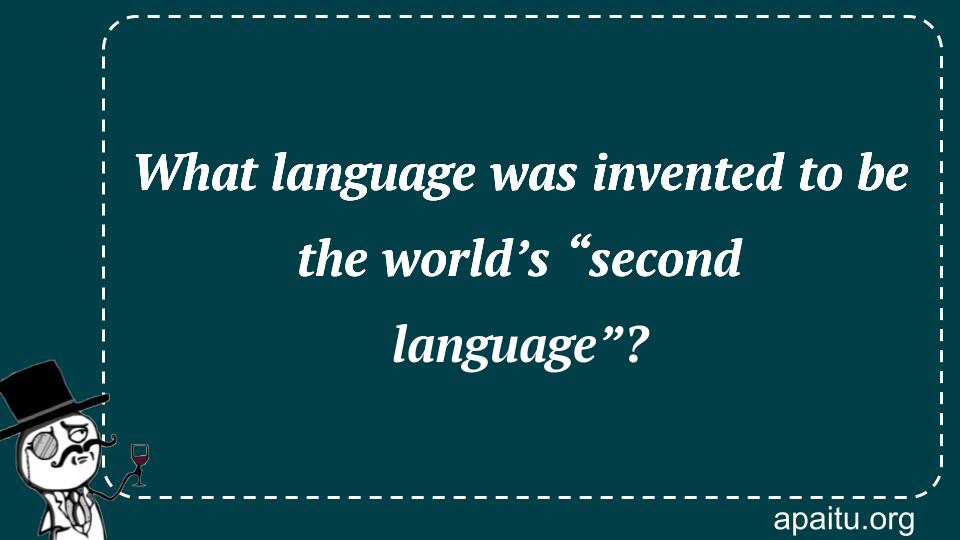Question
Here is the question : WHAT LANGUAGE WAS INVENTED TO BE THE WORLD’S “SECOND LANGUAGE”?
Option
Here is the option for the question :
- Aramaic
- Esperanto
- English
- Catalan
The Answer:
And, the answer for the the question is :
Explanation:
The Polish physician and inventor L.L. Zamenhof created Esperanto with the intention that it would become a global second language. His goal in creating Esperanto was to facilitate communication between persons of different cultural backgrounds through the use of a universal language. There are now between two hundred thousand and two million native speakers of this built auxiliary language, making it the most widely used of its kind.

Esperanto is a constructed language that was created in the late 19th century by a Polish Jewish ophthalmologist named L.L. Zamenhof. The language was designed to be a universal second language, one that would be easy to learn and could be used as a means of communication between people of different cultures and languages.
Zamenhof was born in Bialystok, then part of the Russian Empire, in 1859. As a child, he witnessed the conflicts and misunderstandings that arose from the language barriers between different ethnic and religious groups. He believed that a common language could help bridge these differences and promote understanding and peace among people.
In 1887, Zamenhof published the first book on Esperanto, titled “Unua Libro” or “First Book.” The language was designed to be simple and easy to learn, with a regular grammar and a vocabulary derived from several European languages, including English, French, German, and Russian.
Esperanto quickly gained popularity among international communities, particularly in Europe. It was embraced by intellectuals, linguists, and pacifists who saw it as a means of promoting peace and understanding between different cultures and nations. Esperanto organizations were established around the world, and Esperanto literature, music, and even a film industry emerged.
Esperanto has faced criticism and opposition over the years. Some linguists and language enthusiasts argue that Esperanto is too artificial and lacks the richness and complexity of natural languages. Others argue that the promotion of Esperanto as a universal language undermines the importance of regional and minority languages and cultures.
Esperanto continues to be studied and spoken by a dedicated community of enthusiasts around the world. The language has also influenced the development of other constructed languages, such as Interlingua and Ido.
One of the unique features of Esperanto is its neutrality. The language was designed to be free from political and cultural bias, and it has no official country or culture associated with it. This has allowed Esperanto to be used as a means of communication between people of different backgrounds and ideologies.
Esperanto has also been used in various international contexts, such as in diplomatic meetings and conferences. The United Nations Educational, Scientific and Cultural Organization (UNESCO) has recognized Esperanto as a means of promoting cultural diversity and understanding.
Esperanto is a constructed language that was created to be a universal second language, one that could promote peace and understanding between different cultures and nations. While it has faced criticism and opposition over the years, Esperanto continues to be studied and spoken by a dedicated community of enthusiasts around the world. Its neutrality and ease of use make it a valuable tool for communication and cultural exchange, and i